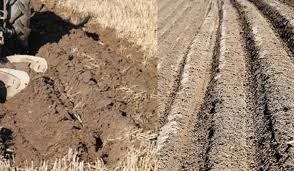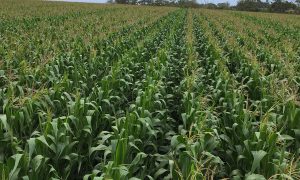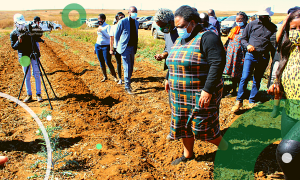
Important general guides for successful maize production

The country’s planting season for maize runs from late October to mid-December and all the seed should be in the ground by mid-December. But before planting any kind of crops, there are general guidelines that need to be followed. This lowers chances of any unnecessary loses and on the part of farmers.
Tractor and diesel
The farmer should ensure that diesel and other lubricants are available and the tractor is maintained and serviced. E.g a farmer will require 4000L of diesel to cover 50ha from planting to harvesting.
We share Steps that need to be noted when plating Maize from land preparation, planting to harvesting.
Soil testing
Oh Wait! Planting a garden without first testing the soil is like driving a vehicle while wearing a blindfold.
A soil test measures soil pH, texture, and structure, as well as what nutrients are there and which are lacking. It also examines the texture of the soil. Red clay soil most often needs compost to improve drainage, as is sand. Red clay holds water and drains too slowly, while sand has the opposite problem, drainage is much too fast. The soil test also sometimes advises of how much compost the gardener should add. Nitrogen, phosphorus, and potassium are primary ingredients in fertilizer. Some of these will be at an appropriate level in your existing soil. Other minor nutrients contribute to growth as well. The test reports scientific levels of boron, calcium, copper, magnesium, zinc, and manganese found in your soil sample. Soil pH determines if your soil is acidic or alkaline. Most soils are in between, working toward a neutral point. The pH of the soil largely determines the vigor of your vegetables (how large and quickly they grow and produce).
Land preparation
Tilling or ploughing the land should take place after harvest or the first rainfall. The reason Deep plowing- this should done early after the first rains. This will help to conserve moisture and allow organic matter to decompose. This will also allow air to pass, good crop production and retain water, turnover the soil and burry weeds.
As part of conservation agriculture it also needs to be noted one can consider no till farming
The following are some advantages and disadvantages of no till farming;
Advantages of no till farming – Soil erosion, less soil compaction, saves you time, Lowe moisture loss and healthier soil.
Disadvantages of no till farming – initial costs of no till equipment, Learning curve for no till planting, Gullies can and may form and there could be a potential increased chemical use.
Harrow the soil
Harrow the soil with disc harrow after Tilling and/or Ploughing. This should be done at one to two weeks intervals. This is done to smoothen the top soil surface.
Make furrows

After harrowing, the soil make furrows with a disc harrow. This will make spacing between rows
Methods of planting
After making rows, plant the seeds and apply fertilizer. It is advisable to use a planter that plants the seeds and apply fertilizer at the same time. Also, make sure that you use quality and tested seeds from reputable suppliers.
Weed control
During growth stages, it is important to control weed that compete with your crops. To do this, herbicides can be applied before planting (Post emergence herbicides) or after planting. N.B the more foreign material is found on maize the grade drops and the price per ton will also drop. This will lead to a loss on your investment.
Fertilizer application
Spreading fertilizer – This can be done 25 to 30 days after planting.
Plant disease control
Using recommended Pesticides. Monitoring the crop and scouting. This should be done at regular intervals.
Harvesting
Harvesting will also require a trailer and a tractor. Detach a number of cops from plants and check for a formed black layer.
Storage/ selling
You require silos to store your harvest. Depending of the maize price one can make a decision as to sell and/or store. N.B Storage cost may vary.




















